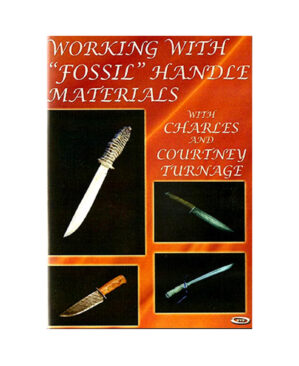Description
In this one hour and fifteen minute DVD, bladesmith Walter Sorrells walks you through the steps involved in making hamons — frequently referred to as “temper lines” — on blades.
While the video focuses on Japanese style blades, the information contained in the DVD can be used by makers of any style blade.
Sorrells shows in detail how clay is laid out on three separate blades — a tanto, a wakizashi and a katana. Each blade is heat treated and polished. You’ll learn to make a wide variety of hamons, from the simple straight suguha hamon, to complex designs like choji (clove blossom), hitasura, kikusui (chrysanthemum on water), sanbonsugi (three cedars), and many others.
The video includes useful information on:
- Clay Layout;
- Hamon design;
- Heat Treating;
- Steel Choice;
- Tools and Materials;
- References for further study;
- Where to buy materials.
NOTE: this video is intended for blade makers with some experience. While heat treatment and polishing are covered briefly, the primary emphasis of the DVD is on design and technique used in creating hamons.
LENGTH: 1:15
WALTER SORRELLS’ DVDs
The Japanese sword is the pinnacle of the blademaker’s art. It encompasses a variety of widely disparate crafts from smithing, to polishing, to woodwork. Taken as a group, Walter Sorrell’s five-DVD series will show everything you need to know – from selecting your tools, steel and supplies…to forging, polishing and mounting your blade.
Walter Sorrells’ first DVD, Forging Japanese Style Blades, shows how to forge functional Japanese style swords using modern steels and techniques, married to traditional geometry and heat treating methods. Mounting Japanese Swords, Making Hamons, Polishing Modern Japanese Style Blades and Making Japanese Sword Fittings round out the series.
Unlike many bladesmithing videos, every attempt has been made to use high production values so as to maximize your opportunity for learning. If you’ve bought knife-making videos before, you’ve probably seen plenty where somebody just set up a wobbly camera in the back of a dimly lit shed and rolled tape. Not these. This series is thoughtfully scripted, narrated in crisp digital audio, well lit and shot, and carefully edited. The Forging, Mounting and Fittings videos are shot in Hi-Def for crystal clear image quality. Details of every operation are shown in close-up so you can actually see what’s going on.
Walter’s approach is to incorporate as wide a range of techniques as possible in these videos. He’s not Japanese trained and doesn’t believe there’s a single “correct” way to make, polish or mount a blade. He stresses starting with a thorough understanding of the function, use and construction of the traditional blade. From there, both traditional and modern tools and techniques are freely incorporated.











